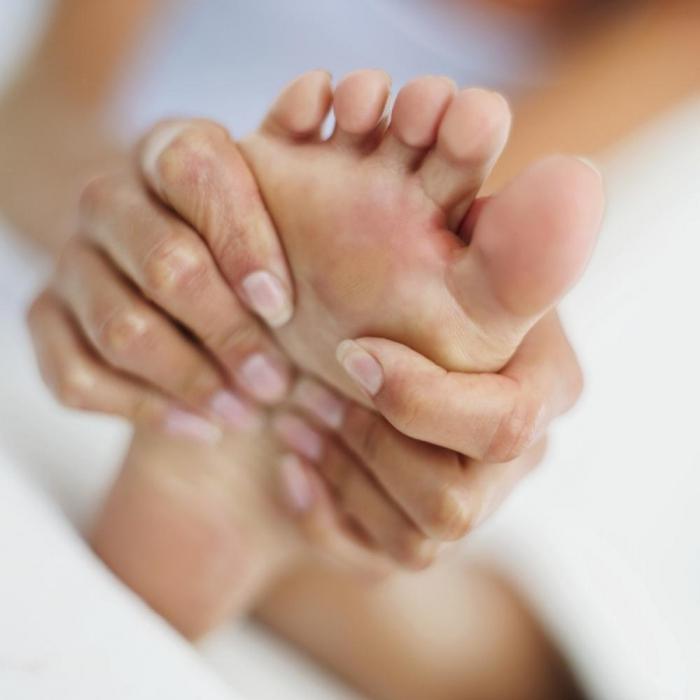Methods of treatment of heel spur: shock wave therapy of heel spur, radiography, laser treatment.
Plantar fasciitis, or in the people "heelspur ", often accompanied by pain in the foot, complicates the process of walking, leads to microtrauma tissue. The causes of the disease are flat feet, incorrectly selected heel height, excess weight. The human foot has an arched shape and is maintained in such a state as a stretched string, an inner ligament that is attached at one end to the heel, the other, branched, to the toes. It is the inflammation and "ossification" of the calcaneal tendon of this ligament that leads to the development of painful sensations, the limitation of the mobility of the foot. The maximum pain manifests itself after sleeping, at the beginning of walking.
Diagnosis of the disease usingX-rays and ultrasound. X-rays give an image of calcium-covered (ossified) ligament in the form of a small spike-like growth - spur, ultrasound reveals an inflammatory process in this area. The disease significantly limits the person's ability to walk normally. In this case, the treatment of the disease is not costly and not long-term with timely access to a specialist. Currently, the following physiotherapy methods for calcaneal spurs are used: X-ray therapy, laser therapy, ultrasound, shock wave therapy, injections of hormonal drugs, electrophoresis using potassium iodide and novocaine.
Consider the advantages and disadvantages of the most commonly used methods of treating the disease.
1. The method called shock wave therapy of the calcaneal spur (UVT) is based on the use of hydroacoustic waves, which, passing through the cells of the heel tissues, meet with an obstacle, ossified by the ligament, and softly affect it. With this action, calcium deposits are gradually destroyed. In addition, shock wave therapy of the calcaneal spur improves blood flow, and, as a consequence, blood supply to the inflamed part of the tissues.
The advantages of this method are undeniable. First, the method is non-surgical and almost painless. The duration of the procedures is about 15 minutes, the multiplicity depending on the severity of the disease - 4-6 procedures with an interval between them 3 weeks. Secondly, this method gives a very high percentage of curing patients and no relapse, and the pain passes after two sessions. Currently, shock wave therapy of the heel spur is the most unique way to treat the disease.
In addition to the shock wave therapy method, there are two more, no less popular and effective method of treatment. Consider them.
2. The method of magneto-laser therapy (MLT, or treatment of the calcaneal spur by the laser) is based on the effect of a light beam of low intensity (laser) on the diseased cells of the patient and on the affected area of the magnetic field. As a result, the body's immunity increases, energy metabolism improves, anti-inflammatory action is observed, and the elasticity of cell membranes is restored. Due to the complex effect on the body, MLT is also successfully used to treat spurs in the heel.
3. X-ray therapy of the calcaneal spur, the so-called one more method of treatment of heel school, which is based on the impact of low-power X-rays on body tissues. There are surface (voltage on the tube of the apparatus is 20-60kV) and deep (voltage on the tube of the apparatus 180-400 kV) therapy. The first is used to treat diseases of the dermatological sphere, and the latter is successfully used to treat inflammatory processes that occur deeper. Under the influence of radiation in the cells, protective fermentation occurs, and the connective tissue is stimulated.
Of course, all three methods have their meritsand shortcomings. But still I would like to dwell in more detail on the first method of treatment of heel spurs. According to experts, this method deserves the greatest respect, since it is the most effective. The main aspect of the success of this process is the timeliness of the patient's treatment to specialists who will select the most acceptable method of treatment.
The effectiveness of this method can be judgedstatistical data. Among 100 patients who were treated with the heel spur by shock wave therapy, about 90 people noted a positive effect and only 10 found it difficult to answer. In addition, many singled out the fact that the treatment is virtually painless or hardly palpable, unpleasant sensations after such therapy does not arise. Of course, for the service will have to pay a lot of money: one session costs about $ 40, for the removal of unpleasant symptoms will need at least 2-3 sessions, and for a full recovery of about 5 (depending on the individual characteristics of the patient's body).
Unfortunately, this method has a number ofcontraindications. Shock-wave therapy of the calcaneal spur is contraindicated in pregnant women, people suffering from poor blood coagulability, who have malignant tumors. Also, this method of therapy is not recommended for people with diabetes, who have inflammatory foci in the spur area (purulent formations, cracks, etc.).
</ p>



